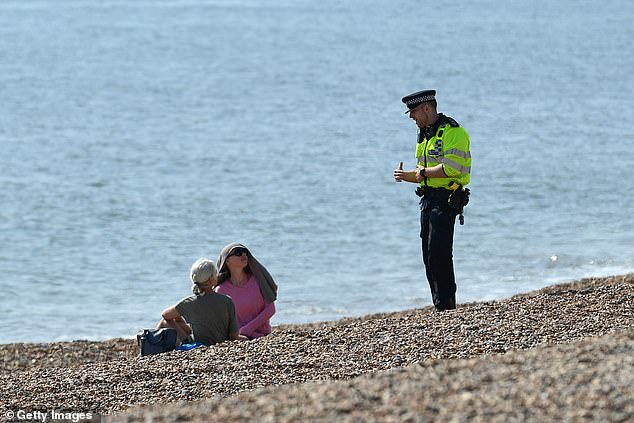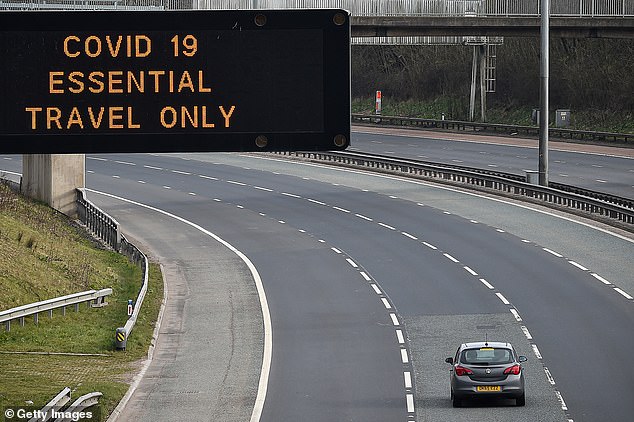BORIS JOHNSON: It saved lives, but now I’m not sure lockdown works
- My last meeting with the Queen and her inspiring words of wisdom… READ HERE
- How a Scottish holiday with Carrie almost ended in disaster: I was thrown out to sea in an inflatable kayak. Time for a life or death decision… READ HERE
As the therapies put it, the lockdown was devastating. In our preliminary discussions about this kind of intervention – telling people not to come near each other – we all assumed that we would have difficulty convincing them to comply.
Chief Medical Officer Chris Whitty, scientist Patrick Vallance and I had thought that if a Tory Prime Minister appeared on TV and told the British people not to go to the pub, or even go out, their natural swear words and libertarianism would encourage sticking two fingers up at the government.
Well, it turned out that the lockdown was an easy sell, and in fact my ‘stay at home’ message was heeded so closely by the workforce that Britain suffered the biggest drop in output since the Great Frost of 1709. The trains were empty. The city centers were quiet. The streets were deserted, except for the cats – which we initially thought, probably wrongly, were not vectors of the disease.
Boris announces the country’s first Covid lockdown from 10 Downing Street in 2020
In that awful April of 2020, new car sales fell by 97 percent – not surprising, considering I had closed the showrooms. National compliance was so total that we even abandoned certain forms of economic activity that were theoretically intended to continue – such as construction – and which actually continued in countries such as France and Germany.
With traffic backed up and trains abandoned, this could have been the ideal time to accelerate the infrastructure rollout: use Covid-secure protocols to build those bypasses, upgrade that track, run the fiber optic cable through the national networks . wainscot.
We missed that opportunity, Crossrail was delayed, HS2 ground to a halt, and as the costs of it all exploded I felt like the vast crenellated sandcastle of my plans was being washed away by the tide of the virus. Around April 20th it started to look like we had passed through the crest of the wave. We had been rising by more than 1,000 deaths per day, but now the totals were falling – both in deaths and hospitalizations.

A police officer asks the public to leave Brighton beach in April 2020 as strict rules were in place

The M8 motorway near Glasgow displays a grim message as an electronic sign in March 2020
They were still terrible – 800, 700, 600 – but the trajectory was clear. It looked and felt like the great national effort was starting to work. All that hardship, all that isolation – it started to rob the virus of targets; we protected the NHS and saved lives.
At that moment I believed in the correlation between the non-pharmaceutical interventions – the lockdown and other restrictions on human contact – and the shape of the epi-curve. I believed we had bent that parabola by the force of our collective will, like Uri Geller with a spoon.
Only later did I start looking at the curves of the pandemic around the world – the double hump that seemed to rise and fall regardless of governments’ approaches. There were always two waves, whether you were in China, where lockdowns were ruthlessly enforced, or in Sweden, where they took a more voluntary approach.
Looking back, I wonder if King Cnut was right all along when he placed his throne on the banks of the Thames and asked his courtiers to watch as he ordered the tide to recede in vain. Perhaps there are limits to human agency; Perhaps it is not possible for government action to ward off the waves of a highly contagious disease, any more than it is possible to ward off the tide of the Thames.
I’m not saying that lockdowns haven’t achieved anything; I’m sure they had some effect. But were they decisive in reducing the disease and reducing the surge? All I can say is that I’m not sure anymore.
Adapted from Unleashed by Boris Johnson (William Collins, £30), to be published on October 10. © Boris Johnson 2024. To order a copy for £25.50 (offer valid until 12 October 2024; UK P&P free on orders over £25) go to mailshop.co.uk/books or call 020 3176 2937.
Boris Johnson will be in talks with Gyles Brandreth at The Bridgewater Hall, Manchester, on October 12.
